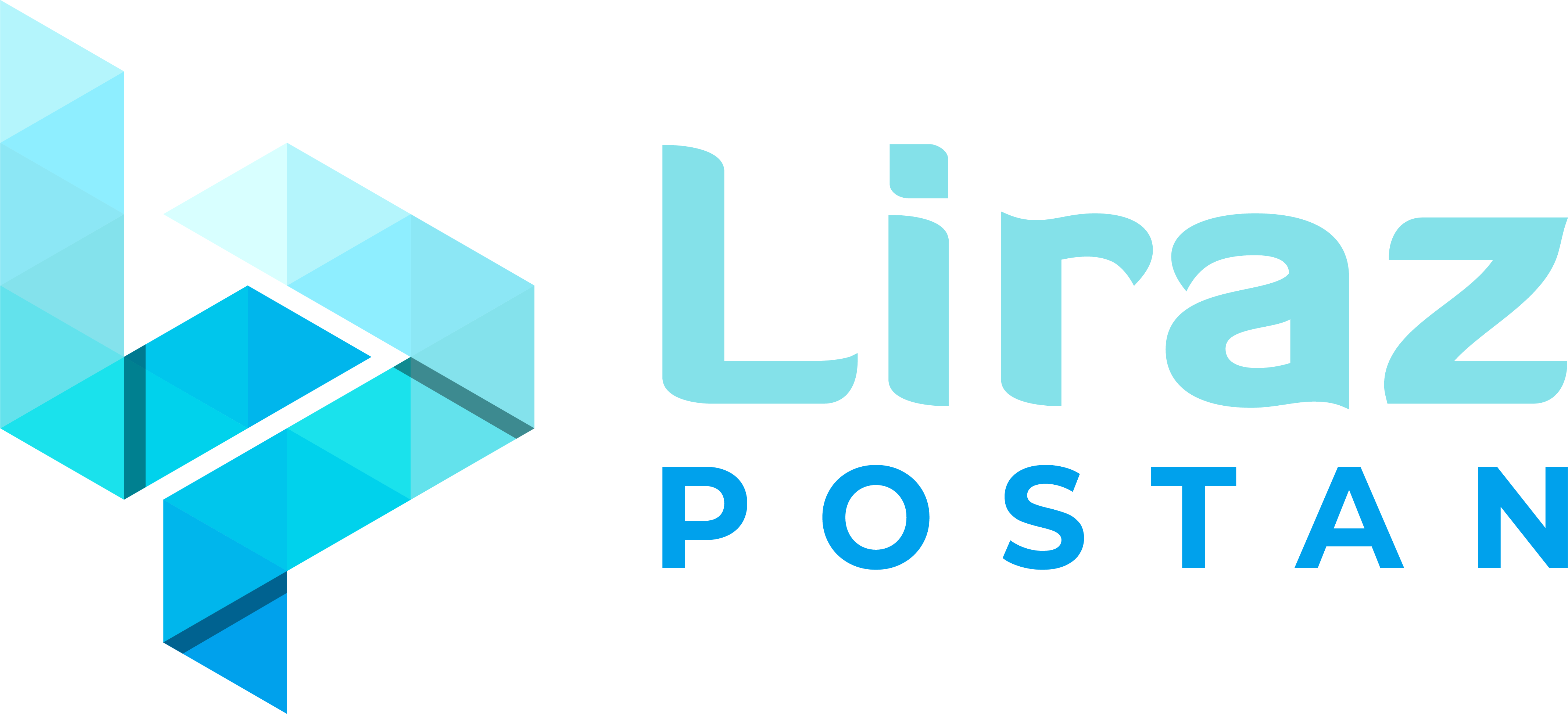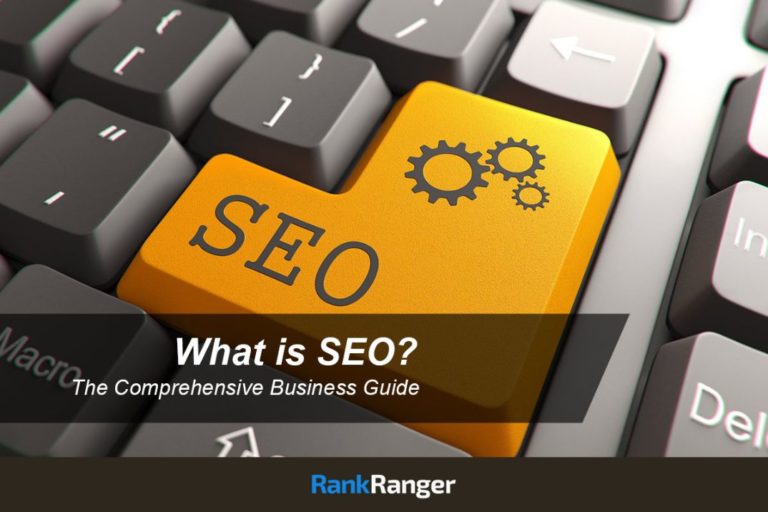Today, the use of digital marketing tactics is in full swing – and SEO is leading the pack. There are thousands of enterprises that implement SEO techniques into their websites, all to maintain an active online presence – and scale their business.
But, what is SEO and just how relevant is it to your online business?
In short – far more than you might have anticipated. In long – below is a detailed overview of all-things SEO and how a properly implemented SEO strategy can land your business on Google’s first page.
Defining SEO
Search engine optimization (SEO), in plain terms, is the adjustment, or optimization, of websites to place higher in search engine results.
SEO encompasses many different techniques to improve search engine rankings. This predominantly includes the use of specific keywords and key phrases. But SEO also encompasses adjustments to the design and overall structure of the website, its content, and data.
Search engines like Google, Yahoo, or Bing are key to driving potential customers to your website and a proper SEO structure can go a long way in boosting traffic to your site.
When a user searches any of the billion things they could possibly search for online, the website that is best optimized for that topic will appear first on the search engine results pages, aka SERP.
SEO allows indexing software bots, known as web crawlers or just crawlers, to detect and index your site. The crawlers help the search engine to better understand your website and index it to make it visible for relevant search results.
What Function Does SEO Have?

Search engine optimization serves various functions. It helps your website rank higher on a given search engine. This is one of the main benefits and goals of SEO.
Let’s look at an example.
If someone searches for the best ‘cough teas’ on Google, the page that is best optimized for this key will appear first. In the same vein, the second-best optimized site will appear second, and so on. The search word or phrase plays only a small part in the visibility of your site and the overall SEO impact. The relevance of your content, its apt arrangement, and the number of times related terms and phrases have been used are also important factors that impact the quality of SEO.
Beyond browsing for general informative topics, the bulk searches are made for commercial purposes i.e. when people look to buy or pay for particular goods or services. These types of websites might require a different SEO structure than, say, sites that serve solely as a means for providing information. For example, a search for a particular movie title will likely place Wikipedia or IMDB as the top two options. But a search for ‘feather pillows’ will yield more consumer-oriented sites.
Another important role – perhaps among the most vital uses– of search-optimized websites is the drawing of natural traffic. This is also known as ‘organic’ traffic and is the opposite of paid traffic. Both will be discussed separately later on.
Ranking SEO Factors
No one, except the search engine itself, knows the exact nature of ranking factors. However, over time, people began to better understand how search engine algorithms function, which helped them optimize their sites accordingly.
Ranking factors refer to Google’s algorithms for ranking websites on its search engine results page (SERP). There could be tens of thousands of different elements that search engines factor in, to rank websites based on their SEO. This includes things like the site structure, the use of keywords and key phrases, reviews, links, and word count, to name a few.
Some factors are more important than others. For instance, sentence length is more important than, say, word count. Linguistics experts believe individuals, on average, can retain about 20 words in their short-term memory. In effect, Google favors concise and on-point rather than lengthy sentences.
Other significant factors include site speed, linking, mobile compatibility, mobile speed, and user experience.
I always say: “When you have an SEO dilemma- think what will be the best for your readers.”
How Google’s Algorithms Work: An Overview
The internet contains a vast number of websites, forcing search engines to use complex algorithms and sort out various indexing processes i.e. index sites.
Google crawlers endlessly traverse online links and place websites in a massive index. In order for your site to be added to the index (if it hasn’t been already), a link must be provided to your site – from an already indexed source. When the web crawler detects the link to your site, it will add it to the index, which will then automatically add it to Google’s SERP.
When a search query matches your website, Google’s algorithm will evaluate the relevance of the search to your website, alongside the relevance of the website to your search. Then, depending on the SEO quality, Google will place your site among the top choices for the user to visit. If your site is only slightly relevant to the query, it will likely rank lower, too.
If you make any adjustments to your site for better search optimization, the crawler would eventually detect the changes and save the updated link.
TYPES OF SEO
SEO is an intricate mixture of strategies to make websites more visible to users. It allows marketers to make their page optimized for different types of searches.
Due to the fickle nature of online searches, there are several different SEO strategies businesses can employ to make their site more discoverable. Below we provide a short review of eight SEO types, each having its specific mechanisms and intricacies for optimization.
1. On-Page SEO
On-page SEO refers to the optimization of specific pages of a website. A website can have different pages, like a category or a products page, all requiring separate optimization.
The optimization should include adjusting every aspect on the page, like optimizing your H1 tag i.e. the title. Next, your pages must be properly structured and divided into relevant H2 and H3 headings. The title of each heading can also be optimized with useful keywords and by optimizing its length.
On-page SEO involves paying attention to the overall relevance of the page for the targeted keywords. It must include concise content, alongside well-placed and correctly used keywords and phrases. The use and optimization of images and metadata – aka short and keyword-rich content titles and descriptions – are also a must, hand in hand with internal linking.
This SEO type requires extensive research into various types of words and phrases users usually associate with your business. Some keywords are used more than others, but using just the right amount of each keyword – and in the right context – will drastically improve your site rank. Overstuffing it with primary keywords, however, doesn’t do much for your SEO and can overburden the natural content flow.
2. Off-Page SEO
Off-page SEO involves outside factors, like social media and link building. This is where you don’t make any structural or content changes to your site but rather focus on promoting it.
Google takes into account the overall popularity of a site, including social media shares and reactions, all to determine its ranking. Logically, the more popular the site, the higher its SERP placement. Off-page, or off-site SEO, helps strengthen your site’s overall reputation – an element valued highly by Google’s algorithms.
One way to work on your off-site SEO is to increase your social media presence and focus on link building. The latter involves the promotion of links to your site from other trusted sources associated with your organization. Having trusted sources linked back to your site will not only improve your SERP rankings – but will also connect your business to a new client base interested in your offering.
Off-page SEO might have little to do with optimization, but it is pivotal in making your site known to a wider audience and over various different channels.
Technical SEO
Technical SEO is less related to front-end content and more related to the arrangement and storing of data – and remaining backend processes.
Technical search optimization ensures your site is user-friendly, loads fast, and helps search engine crawlers to detect it more easily. Essentially, technical SEO ensures the site is as intelligible to the search engine algorithms as well as the users accessing it.
There are several factors that contribute to an effective technical SEO, including mobile compatibility, site speed, and security. One way to enhance the technical optimization of your site is by using the so-called Schema Markup. This is the coded language that includes structured data related to your site. It is read by search engines who then present a deeper understanding of what the site is about. This, in turn, allows search engines to recommend your site to natural traffic.
Mobile SEO
Mobile SEO helps bring traffic to a website through mobile searches and can also make an app more discoverable on the Google Play Store, and Apple’s App Store.
Over half of Google searches are conducted through smartphones, a clear indicator of the rapidly increasing rate of mobile web surfing. In fact, even back in 2014, Google announced that it would favor sites that are optimized for mobile use by attaching a ‘mobile friendly’ label to the site description. Sites that have this label must not use software that is not typically used on smartphones. They also need to ensure all links are easy to open, and that the text is intelligible enough, without the need to zoom.
One of the ways to ensure quality mobile SEO is via Responsive Web Design, as defined by Google. Responsive Web Design happens when the server provides the same HTML code to all device types (desktop and mobile) while a separate software adjusts the site layout to the screen size.
Mobile SEO is already employed by thousands of organizations worldwide. The demand for this optimization method will only continue to grow as mobile searches steadily exceed desktop searches.
YouTube SEO
If you believe you can produce quality videos about your business, it’s time to think about YouTube search optimization. YouTube, a subsidiary of Google, is undoubtedly the biggest video-sharing platform and also one of the biggest search engines. Therefore, optimizing your site for YouTube, if possible, will be a huge boon for your business.
Much like most Google search optimizations, top-quality content is essential for proper YouTube SEO optimization. It needs to be on-topic and provide an answer or explanation to the query. A good-quality video will also result in more organic YouTube traffic and keep people watching your clips longer. Gaining a lot of comments and favorable reactions from your subscribers and viewers are all factors that contribute to your material ranking higher in YouTube’s search results.
Keyword exploration is equally as important as quality content. To boost your research, you can make a comprehensive list of all keywords related to your site. To find relevant terms, however, use YouTube’s Search Suggest option, or see which keywords are used by other sites in your niche. Make sure you choose low-competition keywords i.e. terms and phrases that are not as often used by competitive YouTube channels.
Local SEO
Local SEO is essential when businesses with physical locations want to promote their services to anyone in the area that might be in need of the service or product.
Most of the generic rules for website optimization also apply to Local SEO. It helps small businesses become more easily discoverable to locals through the web.
While seemingly simpler than the rest of the SEO categories, there are some important steps you need to follow to be more visible in local search results. First, you should claim your Google My Business listing. This way, Google will make sure key information related to your business – the exact location (country, city, and address), phone number, email, working hours, accepted currencies, photos, and customer reviews – are readily available.
The use of key terms and phrases, of course, can enhance your local SERP placement. Remember, well-arranged and easily discoverable key information to search engines can also increase your SERP rank.
Voice SEO
Voice SEO is rarely included in lists of SEO types, though it definitely deserves its own category. Voice searches accounted for a fifth of all Google searches in 2018. Today, the rate of voice surfing is even higher.
If enough customers search for the types of service you provide on mobile, it’s time to optimize your site for voice search. The majority of voice search commands are conducted via smartphones, mobile SEO, and voice SEO overlap.
Voice search optimization is keyword-based. However, because people tend to speak in fuller, more grammatically complete sentences, optimizing for a detailed voice search requires more caution.
A great number of voice queries involve searching for local information or for directions. This makes local SEO extremely important for voice search.
When people speak to their voice-activated smartphones, they tend to use more natural and conversational language. Users also tend to ask many questions, so having a FAQ section that answers potential questions the user might have about your business, is key for voice optimization.
One last thing, include as much relevant information and keywords related to your site as possible. Crawlers will process your site’s microdata and recommend your site to applicable queries.
Semantic SEO
Semantic SEO is a strategy where an SEO attempts to create a well-structured network of content designed to be understood and ranked by Google’s semantic search engine. What this means is, Google and other search engines have changed the way they categorize information. In the past, when someone performed a search, Google would match keywords found in the search query with those same keywords found in web content. Google would then create a results page to answer the search query based on keyword optimization.
This model has slowly evolved over the years. Google now has a database of entities called a knowledge graph. This database includes not just the entities and their attributes, but also how they relate to each other.
Google uses this information to ‘understand’ the search query by analyzing what entity the search query is about. It then attempts to understand what type of information the searcher is looking for. In other words, is the query a ‘who’, ‘what’, or ‘why’ question?
Once Google figures this out, it looks for web content that satisfies the query by including the main entity and related entities in a way that semantically satisfies the question. In this way, Google imitates how a human understands and answers questions.
This revolution in the way information is categorized has given rise to new SEO strategies that involve optimizing content to be ranked semantically. A semantic SEO approach generally focuses on creating a network of content that covers entire topics rather than keywords.
Tips for Quality SEO
Content is key – when you configure your website for a certain type of SEO, the first key is to provide overall good quality content. Your content must be intelligible, succinct, relevant to the topic, and well-organized in terms of keyword density and headings.
Consider your page quality – your page structure can go a long way toward getting a higher SERP rank. A site that is optimized for mobile devices, that is easy to use, and that doesn’t crash is instrumental for a positive user experience (UX). Many SEO experts consider UX an utmost important ranking factor.
Use schema markup – the outward appearance and structure i.e. frontend development, is paramount to your SEO strategy. But, it also matters to use microdata, thus making it easier for search engines to read and understand the site’s content.
Keywords – keyword search and implementation is one of the most-practiced search optimization techniques. Using the right keywords and phrases, the right amount of times, and in the right place – can do wonders for your SEO. Depending on the type of SEO you want to implement, the variety and length of keywords can differ. For instance, keywords used for mobile SEO and local SEO can be significantly different when implemented.
Links – link building is mostly related to off-site SEO. Links are important for the overall reputation of your website and its content. Link building means having an authoritative source – usually another site – provide a backlink to your site. The more indexed and reputed sites link to your page, the greater the chances of your page ranking higher.
Tags and URL Structure – using HTML tags allows web browsers and engines to better read your site structure. Tags are simple HTML codes that tell search engines the way in which certain elements of your website (title, headings, paragraphs, and other content) should be presented. Unified resource locators (URL) can also be adjusted for SEO. Search engine crawlers need unique, brief, keyword-rich URLs to index, and recommend your page to users.
SEO PPC and Organic Search
PPC and Organic search are two opposite concepts. PPC stands for pay-per-click and it is when marketers pay search engines for each click. PPC strategies are used both by search engines and social media platforms like Facebook and Twitter, which generate the bulk of their revenue via paid ads.
Meanwhile, organic (also known as natural or earned results) visits to your page are driven strictly by having a properly optimized page. Organic traffic includes page visits from the most relevant customers, obtained naturally through quality content.
Advertisers can’t pay to have a higher organic SERP rank. SEO is exclusively intended to increase a page’s organic traffic. Organic traffic is how most sites get visitors to their page.
SEO Trends
- Structured Data Markup – Google provides a tool dubbed the Structured Data Markup Helper which you may use to implement schema markup. Schema markup helps you annotate your text and embed specific codes so it can be readable to Google’s algorithms. It allows search engines to crawl and index your data and display it in SERP snippets for relevant queries.
- Core Web Vitals – Recently, Google introduced so-called Core Web Vital metrics – an update to Google’s ranking algorithm. The update mostly revolves around the loading speed and stability of the page and the overall user experience. Google introduced the algorithm update to improve the general user experience of sites and provide those browsing the web with the aptest search results.
- Passage Indexing – in 2020, Google started processing individual paragraphs of websites to generate results for more specific searches. This means, Google can show your page on the first page of the Google search results based on a single passage of your site – should that passage answer a rightful query, that is.
- Unique content – content authenticity seems to be a ranking factor that does not become outdated. Site structure, keywords, metadata, and voice SEO are crucial for SEO ranking, and so is unique content. Having authentic, plagiarism-free content is vital to how high your page ranks.
Glossary of 5 Common SEO Terms
Anchor text – a specific word, keyword, or key phrase with a hyperlink attached to it.
Key performance indicators – or KPIs, are specific SEO-related metrics – like the volume of organic traffic, bounce rate, etc. – that help you see if your SEO strategy works.
Cost per thousand – CPM is the amount of money marketers pay for every 1,000 views (rather than clicks) of their ads.
Meta tags – coded elements inserted into the HTML, all read by search engine algorithms and identified by web crawlers.
White Hat SEO – referring to SEO techniques that are in line with accepted SEO practices. In contrast, Black Hat SEO practices are shady or downright forbidden SEO tactics, such as keyword stuffing, and can even bear legal consequences.
SEO Your Heart Out!
SEO involves an overarching set of strategies that allow you to gain more visibility across search engines. But search engines such as Google, Yahoo, and Google-owned YouTube, all have different ways of ranking sites depending on the elements related to the query – and the site’s usefulness to the user’s query.
Web pages can implement several SEO strategies at once. For example, you can have your page optimized for voice search and mobile search, but also implement on- and off-site SEO techniques.
Search-optimized websites have mutual benefits for those who do the searching and for the overall SERP performance of your site. Not only does a proper SEO-configured page ramp up your organic traffic, but the quality of that organic traffic as well.







